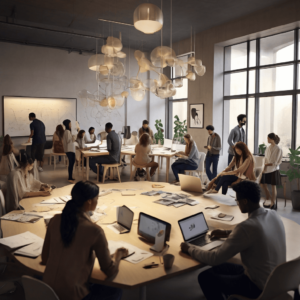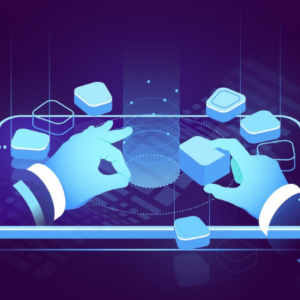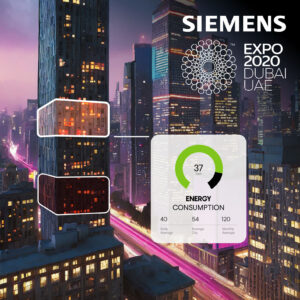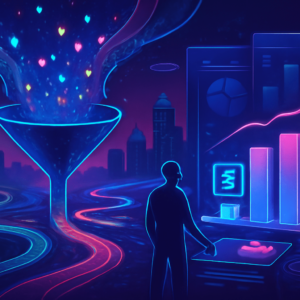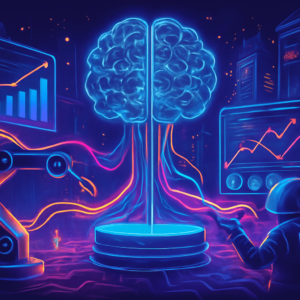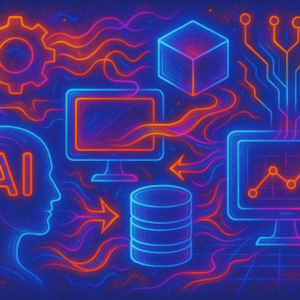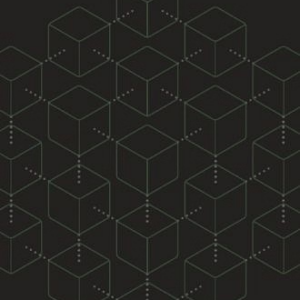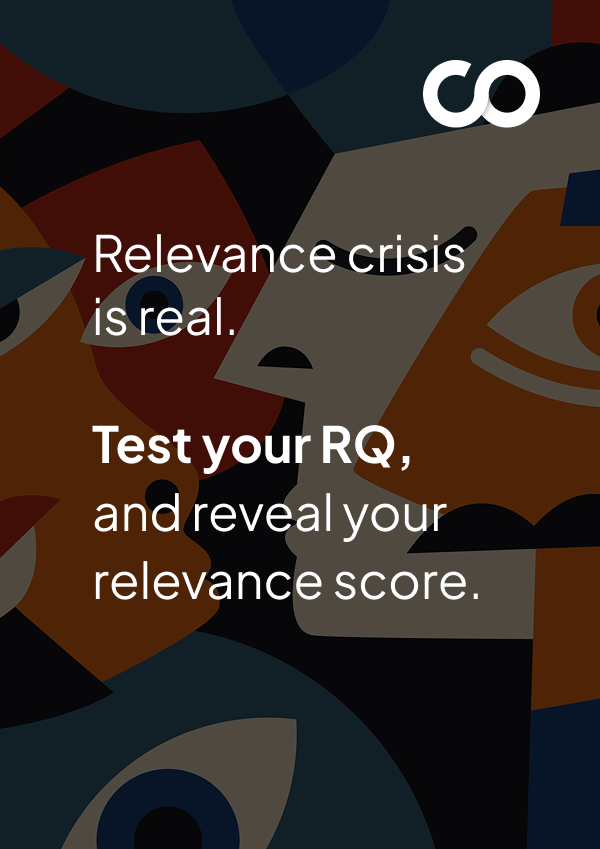Application Modernization Services
Secure, Reliable Cloud Application Modernization Services

Cloud Application Modernization That Moves as Fast as Your Business Grows
When your legacy applications crash during high traffic, take months to implement a simple update, and keep your team stuck in maintenance mode, it’s a significant concern. It means your systems are slowing down your business. Monolithic architectures drain budgets, delay innovation, and limit scalability, making it harder to meet growing customer expectations.
Codewave’s Application Modernization Services help you move from legacy complexity to cloud-native agility. Our modernization roadmap is designed to keep your business running smoothly while we gradually transform your system, ensuring minimal disruption and a measurable impact.
Our approach uses Docker to containerize applications, ensuring consistent performance across environments, and Kubernetes to automatically scale resources as user traffic increases. Tools like AWS Lambda optimize cost by executing functions only when needed, while GitLab CI/CD automates testing and deployment. This cuts release time from months to days. The result: faster updates, stronger reliability, and systems that scale effortlessly with demand.
The Impact?
70%
Reduce Maintenance Cost
99.9%
Uptime Across Cloud Environments
10x
Improvement in App Performance
Download The Master Guide For Building Delightful, Sticky Apps In 2025.
Build your app like a PRO. Nail everything from that first lightbulb moment to the first million.
Modernize Your Legacy Systems, Without the Downtime
Using design thinking, automation, and modern architectures like microservices and containers, we deliver faster performance, lower costs, and near-zero downtime.
Disconnected systems create silos, delays, and data inconsistencies, slowing decision-making. Manual data entry between CRMs, billing platforms, and operations systems leads to errors, inefficiencies, and missed business opportunities.
We simplify integration by building secure RESTful and GraphQL APIs that connect all your business systems into one unified data flow. Middleware connectors like MuleSoft or Zapier automate workflows, while continuous contract testing ensures stability even as systems evolve.
We also enable event-driven updates, so data syncs in real time across departments, giving every team the same, accurate view of operations. The result is faster collaboration, fewer manual tasks, and data-driven decisions you can trust.
Example: Imagine a manufacturing firm manually synchronizes sales orders once daily, leading to inventory mismatches. After API integration, orders will sync instantly across systems, cutting reconciliation time from hours to seconds and eliminating significant data errors.
As systems age, performance slows and security gaps widen. Unoptimized queries, weak encryption, and outdated configurations lead to slower response times, rising costs, and higher exposure to threats.
Our experts strengthen both performance and security by modernizing your system’s core architecture. We optimize databases through indexing and query tuning, introduce Redis caching to improve response times, and implement CDN-based delivery to improve global load times.
On the security front, we use OAuth 2.0 for access control, manage secrets with HashiCorp Vault, and run automated vulnerability scans with OWASP ZAP. We also embed real-time monitoring and alerting within your CI/CD process, detecting risks before they affect users.
Post-modernization, applications run faster, resist security threats, and pass compliance audits with ease.
Example: A fintech application may require 8 seconds for user authentication due to synchronous validation and legacy hashing. After refactoring with OAuth and asynchronous verification, login time can drop to 800ms, boosting user retention and achieving full PCI-DSS compliance.
Outdated interfaces slow users down, increase errors, and reduce adoption. Cluttered layouts, inconsistent design, and poor accessibility frustrate employees and customers alike. All of these impact productivity, satisfaction, and overall business performance.
We redesign interfaces to be intuitive, responsive, and inclusive. Using React, Angular, or Flutter Web, we rebuild frontends that adapt smoothly to all devices and screen sizes. Accessibility is built into the foundation, following WCAG 2.1 standards with semantic HTML, keyboard navigation, and high-contrast design. We also refine information architecture to make tasks simpler and faster to complete.
Such modern interfaces reduce cognitive load, ease navigation, and deliver inclusive experiences that reduce training time, minimize errors, and improve engagement across roles and devices.
Example: Suppose a manufacturing dashboard requires five clicks to access production metrics. Following a UX redesign and WCAG compliance update, reports will be accessible with just two clicks. This will reduce operator training time and improve user satisfaction scores.
Legacy applications hosted on physical or virtual servers often fail to scale under user load, lack redundancy, and generate unpredictable maintenance costs. Performance degradation, patch dependencies, and high downtime risk make innovation almost impossible.
Codewave simplifies this transition by strategically migrating your applications to the cloud without disruption. We assess your current setup to determine the right migration path: rehost, replatform, or rebuild. Workloads are containerized with Docker and deployed on AWS ECS, Azure Kubernetes Service (AKS), or Google Cloud Run for scalability. Automated CI/CD pipelines in GitLab ensure testing, integration, and deployment happen smoothly while your systems stay live.
Once migrated, your applications perform consistently across environments, auto-scale during traffic surges, and recover instantly from failures. Teams spend less time managing servers and more time building features that move your business forward.
Example: An on-premises insurance CRM hosted on Windows servers may struggle during open enrollment periods and crash when more than 5,000 concurrent users are active. After migrating to AWS with autoscaling and load balancing, it can sustain over 25,000 concurrent sessions with 99.98% uptime, without increasing infrastructure costs.
Monolithic applications make even simple updates slow and risky. One small change can trigger regressions, delay releases, and lock your teams into long testing cycles. Over time, this rigidity limits innovation and inflates maintenance costs.
We help you re-architect legacy systems into modular, cloud-ready architectures that scale and evolve faster. Using frameworks such as Spring Boot, Node.js, or .NET Core, we break down tightly coupled components into independent microservices. Each service runs in its own container, managed by Kubernetes. For high-volume workloads, asynchronous messaging with tools like Kafka keeps operations smooth under load.
As a result, updates roll out independently, releases become predictable, and downtime drops dramatically. Your teams gain agility to experiment, ship faster, and respond to market needs without disrupting core systems.
Example: Say a retail firm needs two weeks to deploy a pricing change due to monolithic dependencies. After re-architecting the system into microservices, the pricing logic will be isolated and deployable independently. This will reduce the update time to under 3 hours while improving fault isolation.
Aging systems drain productivity. Rigid workflows, outdated frameworks, and tangled logic make even minor enhancements time-consuming. Manual data handling, redundant API calls, and slow queries further impact user experience and business responsiveness.
We reengineer applications to be faster, leaner, and easier to scale. The process starts with an architecture audit to pinpoint bottlenecks and redundant logic. Backends are refactored with tools such as Python’s FastAPI or Java’s Spring Boot for modular, asynchronous processing.
Frontends are modernized with React or Angular for consistency and responsiveness. Redis caching accelerates frequent queries, and optimized PostgreSQL indexing improves data access speeds.
As a result, reengineered systems become lighter, more responsive, and easier to maintain, freeing your development team from the constant need for firefighting.
Example: Imagine a logistics tracking system that refreshes shipment statuses every 15 seconds through a batch job, which delays visibility and overloads the database. After reengineering, each event will trigger an immediate update. This reduces the database load by over half.
Legacy applications built on outdated languages like COBOL, VB6, or Delphi create security risks, integration issues, and talent gaps that slow growth. Over time, maintaining these systems becomes costly and limits your ability to innovate.
We modernize such applications by recoding them into secure, scalable frameworks such as .NET Core, Django, or Go, while preserving your core business logic. Data layers are migrated to MongoDB for greater flexibility, and automated regression testing ensures functionality remains intact after the migration.
Once recoded, applications become more secure, maintainable, and future-ready, with the flexibility to integrate with analytics, AI, or mobile platforms.
Example: A healthcare portal built on VB6 may not be able to integrate with digital records. By rebuilding it in .NET Core and deploying on Azure App Service, it will be able to process patient data faster and support lab integrations.
Our No-Disruption Model to Application Modernization
Modernizing apps isn’t only about code upgrades. It’s more about freeing your business from old limitations. Our process aligns technology evolution with business momentum, ensuring modernization delivers an immediate, measurable impact.
Modernization Discovery & Alignment
We begin by mapping your current ecosystem. This includes reviewing codebases, integrations, and infrastructure to identify what slows delivery or inflates costs. Through stakeholder workshops and dependency mapping, we analyze data flows, tech stacks, and legacy risks.
Using tools like SonarQube for code analysis and Datadog for performance insights, we build a modernization report that highlights technical debt, quick wins, and long-term opportunities. The result: a prioritized modernization plan tied directly to business KPIs such as faster release cycles or lower maintenance overhead.
Architecture Redesign & Roadmapping
Our architects define the future-state architecture that your systems will move toward. We decouple monoliths into modular services using frameworks like Spring Boot or Node.js, define APIs with OpenAPI specifications, and introduce Kafka or RabbitMQ to facilitate asynchronous communication, thereby improving scalability.
We also determine which workloads to rehost, replatform, or refactor for the cloud, ensuring the transition aligns with your cost and performance goals. By the end of this phase, you will have a clear modernization roadmap that outlines dependencies, milestones, and measurable outcomes for every stage.
Pilot Implementation & Progressive Migration
We begin with a high-impact module as a pilot build, modernizing it to validate performance, cloud stability, and user experience. Once proven, the same approach is scaled across other modules through incremental migration, ensuring uptime throughout.
Legacy and modernized components operate side by side, communicating via secure REST or GraphQL APIs and event-driven middleware. This step-by-step rollout replaces risky “big-bang” cutovers with continuous modernization, delivering visible improvements from day one.
Quality & Security Reinforcement
Modern systems demand modern safeguards. Every component undergoes automated performance, regression, and security testing, ensuring compliance with global standards (GDPR, HIPAA, SOC 2, where relevant). We embed observability from day one, utilizing real-time monitoring to identify and resolve issues before users even notice them. The outcome is a secure, auditable, and future-proof system you can scale confidently.
Cutover, Stabilization & Optimization
Once migration is complete, we deploy using blue-green or canary strategies to minimize downtime. Infrastructure provisioning is automated with Terraform or AWS CloudFormation, making environments reproducible and version-controlled.
During rollout, we monitor live metrics and user sessions in New Relic and Grafana, quickly resolving any anomalies that arise. Once stable, we tune resource allocation, optimize database queries, and implement auto-scaling rules to ensure sustained performance as traffic grows.
Don’t let legacy code dictate your speed of innovation.
Modernization That Delivers. Across Sectors, at Scale.
Industry | How Application Modernization Benefits You |
Application modernization enables real-time analytics, supporting predictive maintenance and energy demand forecasting. By integrating IoT and AI, organizations can detect faults early, reduce downtime, and improve efficiency across distributed assets and grids. | |
Modernized learning platforms support scalable operations and AI-driven personalization, enabling institutions to deliver adaptive content and track student performance in real-time. Cloud-native setups ensure smooth content delivery across devices and 24/7 accessibility. | |
Modernizing healthcare applications enables secure, cloud-based management of patient records and hospital workflows. It ensures compliance with HIPAA and GDPR standards, automates data exchange between clinics, labs, and insurers, and improves care delivery. | |
In the financial sector, modernization transforms monolithic systems into microservices-based, event-driven architectures that process transactions more efficiently and securely. Real-time fraud detection, API integrations, and scalable infrastructure enable financial institutions to innovate rapidly. | |
Retailers benefit from modernization through AI-powered demand forecasting, automated inventory management, and omnichannel synchronization. Real-time data ensures accurate stock visibility across all stores and online channels, enabling faster fulfillment, greater cost efficiency, and more personalized customer experiences. | |
By moving agricultural management systems to the cloud, businesses can integrate IoT sensors and satellite data to monitor soil, weather, and crop conditions in real time. Predictive analytics support more accurate yield forecasts, optimized resource utilization, and enhanced supply chain coordination. |
Our Tech Stack Powering Agile, Cloud-Native Modernization
Category | Tools & Technologies |
Cloud Infrastructure | AWS, Microsoft Azure, Google Cloud Platform (GCP), IBM Cloud |
Application Frameworks | Spring Boot, .NET Core, Django, FastAPI, Node.js |
Architecture & Containerization | Docker, Kubernetes, Helm, OpenShift |
Microservices & API Management | GraphQL, REST APIs, Kong API Gateway, Postman, gRPC |
Databases & Data Modernization | PostgreSQL, MongoDB, MySQL, Redis, Amazon RDS, Azure SQL |
CI/CD & DevOps Automation | Jenkins, GitLab CI, GitHub Actions, CircleCI, Terraform |
Event Streaming & Messaging | Apache Kafka, RabbitMQ, AWS EventBridge, Azure Service Bus |
Monitoring & Observability | Prometheus, Grafana, New Relic, Datadog, ELK Stack |
Security & Compliance | OAuth 2.0, JWT, HashiCorp Vault, OWASP ZAP, SSL/TLS encryption |
Performance & Load Testing | JMeter, k6, Locust, Gatling |
UX Modernization & Frontend | React, Angular, Vue.js, Tailwind CSS |
Accessibility & Design Systems | WCAG 2.1 Guidelines, ARIA Roles, Figma, Storybook |
Automation & Workflow Orchestration | Apache Airflow, Zapier, n8n, Temporal.io |
Collaboration & Documentation | Confluence, Jira, Notion, Slack, Miro |
Modernization Stories That Speak in Outcomes
Our modernization projects have helped businesses reduce deployment time from weeks to hours, achieve 99.99% uptime, and cut maintenance costs in half. From scalable fintech platforms to compliant healthcare systems, every transformation delivers measurable speed, stability, and growth.
View our portfolio!
We transform companies!
Codewave is an award-winning company that transforms businesses by generating ideas, building products, and accelerating growth.
Frequently asked questions
Application modernization is the process of updating existing legacy applications to modern technology stacks, architectures, and features. Businesses must remain competitive, reduce maintenance costs, improve user experience, and utilize new technologies while preserving valuable business logic.
The timeline varies depending on the application’s complexity and scope. Simple modernization projects can take 3-6 months, while complex enterprise applications may require 8-12 months to complete. We typically work in 2–3 week sprints, delivering incremental improvements in the first few iterations.
Costs vary based on project scope, complexity, and chosen modernization approach. We provide a detailed cost analysis following the initial assessment, along with flexible engagement models tailored to suit various budget requirements.
Yes. We often retain functional modules and refactor only where necessary. Using APIs, containerization, and middleware integration, we modernize critical components while preserving existing business logic. This saves time and costs.
We utilize ETL pipelines and validation scripts to securely and accurately migrate data. Tools like AWS DMS or Azure Data Factory ensure zero data loss and minimal downtime during the migration process.
We reverse-engineer architecture, analyze logs, and interview domain experts to reconstruct workflows. Code parsing tools help identify dependencies, allowing modernization to proceed safely without relying entirely on existing documentation.




